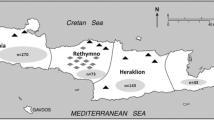Abstract.
The prevalence and intensity of shedding of Cryptosporidium parvum oocysts and Giardia duodenalis cysts was investigated in cattle grazing in the vicinity of the Bwindi Impenetrable National Park, Uganda. The prevalence of cryptosporidiosis and giardiosis was 38% and 12%, respectively, with 10% concomitant infections. Shedding intensity varied from 130 to 450 oocysts/g (mean of 215 oocysts/g) and from 110 to 270 cysts/g (mean of 156 cysts/g). Significantly more pre-weaned than post-weaned cattle were infected with either parasite, and the pre-weaned cattle shed significantly higher numbers of either parasite than the post-weaned cattle. Mathematical modeling indicated that the maximum prevalence of asymptomatic infections can reach approximately 80% for cryptosporidiosis and 35% for giardiosis in the sampled cattle. Because C. parvum and G. duodenalis recovered from cattle can infect people and gorillas, cattle that graze within the Bwindi Park should be considered as a significant reservoir of these anthropozoonotic parasites.
Similar content being viewed by others
Author information
Authors and Affiliations
Additional information
Electronic Publication
Rights and permissions
About this article
Cite this article
Nizeyi, J., Cranfield, M. & Graczyk, T. Cattle near the Bwindi Impenetrable National Park, Uganda, as a reservoir of Cryptosporidium parvum and Giardia duodenalis for local community and free-ranging gorillas. Parasitol Res 88, 380–385 (2002). https://doi.org/10.1007/s00436-001-0543-x
Received:
Accepted:
Published:
Issue Date:
DOI: https://doi.org/10.1007/s00436-001-0543-x




